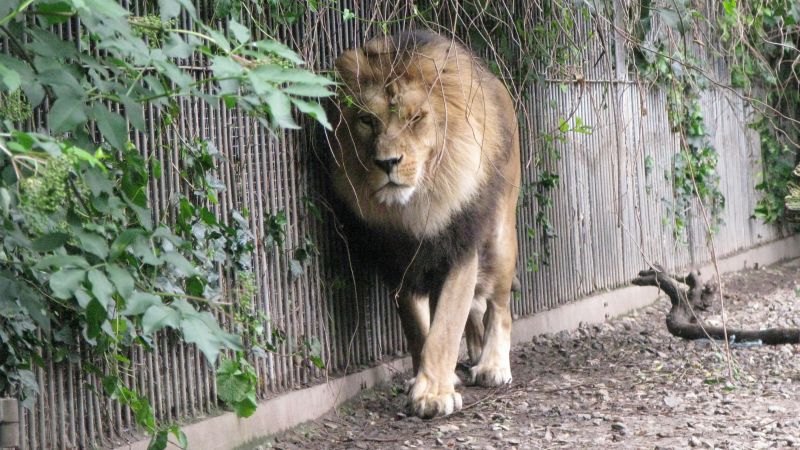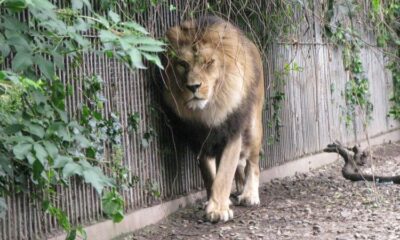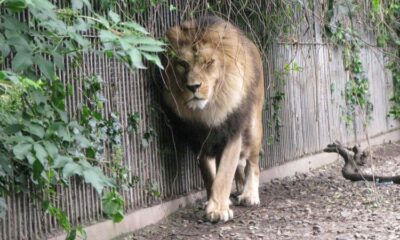Science
Denmark Zoo Seeks Donations of Unwanted Pets for Predators

A zoo in northern Denmark has launched a controversial initiative asking pet owners to donate their unwanted animals to feed its carnivorous predators. The Aalborg Zoo made the request via a Facebook post, inviting donations of guinea pigs, rabbits, chickens, and even small horses to help “imitate the natural food chain” of the animals.
In the post, the zoo emphasized that these animals will not be put on display but will be used to support the diets of species such as the Asiatic lion, European lynx, and Sumatran tiger. “Chickens, rabbits and guinea pigs form an important part of the diet of our predators,” the zoo stated, accompanied by an image of a lynx displaying its sharp teeth. The message highlighted the benefits of this practice, stating, “That way, nothing goes to waste — and we ensure natural behavior, nutrition and well-being of our predators.”
On its official website, Aalborg Zoo clarified that donated animals would be “gently euthanized” by trained staff before being prepared as food. This practice has sparked debate online, with some expressing concern about the ethics of using pets as prey, while others appreciate the zoo’s commitment to maintaining natural feeding behaviors.
Pia Nielsen, the Deputy Director of Aalborg Zoo, explained in a statement to The Guardian that this approach has been in place for years and is standard practice in Denmark. “For many years at Aalborg Zoo, we have fed our carnivores with smaller livestock. When keeping carnivores, it is necessary to provide them with meat, preferably with fur, bones, etc., to give them as natural a diet as possible,” Nielsen said. “Therefore, it makes sense to allow animals that need to be euthanized for various reasons to be of use in this way.”
Nielsen noted that many guests and partners of the zoo value the opportunity to contribute to this process. The livestock received as donations typically includes chickens, rabbits, guinea pigs, and horses.
This is not the first instance of Danish zoos facing scrutiny regarding their feeding practices and population control. In 2014, the Copenhagen Zoo euthanized a healthy young giraffe named Marius to prevent inbreeding, despite public outcry and a petition aimed at stopping the action. Marius’s carcass was subsequently used for research and to feed carnivores at the zoo, which also faced criticism when it later euthanized four lions to make room for a new male in hopes of breeding a new generation.
As the Aalborg Zoo continues its call for donations, the response from the public remains mixed, reflecting broader conversations about animal welfare and ethical practices in zoos.
-

 Lifestyle3 weeks ago
Lifestyle3 weeks agoBelton Family Reunites After Daughter Survives Hill Country Floods
-

 Technology2 weeks ago
Technology2 weeks agoDiscover the Top 10 Calorie Counting Apps of 2025
-

 Education3 weeks ago
Education3 weeks agoWinter Park School’s Grade Drops to C, Parents Express Concerns
-

 Technology1 week ago
Technology1 week agoHarmonic Launches AI Chatbot App to Transform Mathematical Reasoning
-

 Technology3 weeks ago
Technology3 weeks agoMeta Initiates $60B AI Data Center Expansion, Starting in Ohio
-

 Technology3 weeks ago
Technology3 weeks agoByteDance Ventures into Mixed Reality with New Headset Development
-

 Lifestyle3 weeks ago
Lifestyle3 weeks agoNew Restaurants Transform Minneapolis Dining Scene with Music and Flavor
-

 Technology2 weeks ago
Technology2 weeks agoMathieu van der Poel Withdraws from Tour de France Due to Pneumonia
-

 Technology3 weeks ago
Technology3 weeks agoRecovering a Suspended TikTok Account: A Step-by-Step Guide
-

 Technology3 weeks ago
Technology3 weeks agoGlobal Market for Air Quality Technologies to Hit $419 Billion by 2033
-

 Health3 weeks ago
Health3 weeks agoSudden Vision Loss: Warning Signs of Stroke and Dietary Solutions
-

 Technology3 weeks ago
Technology3 weeks agoTrump Faces Internal Struggles Over Epstein Files Handling













